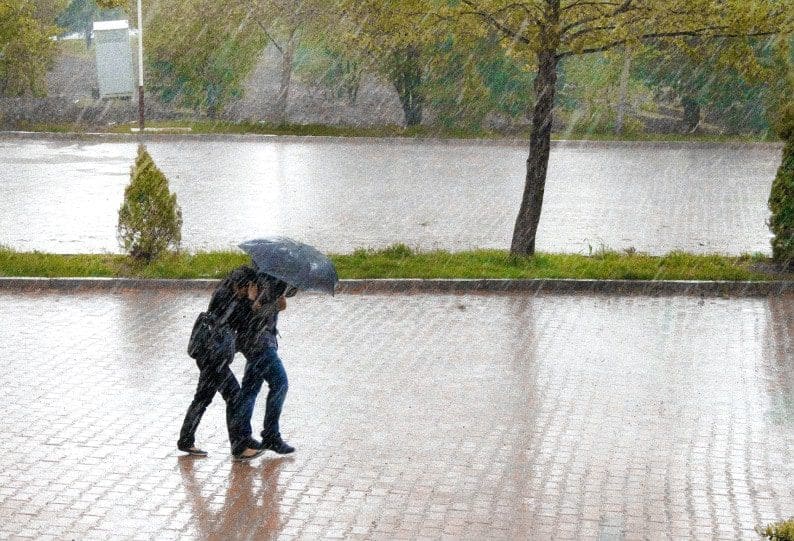words Al Woods
The weather can often be unpredictable, which can lead to major issues for homeowners. Heavy rains, harsh winds, and even snow can all take a toll on your home’s structure. It is important to understand the effects bad weather can have on your house in order to help prevent any potential damage or costly repairs down the road. From foundational erosion to roof damage, this blog post will cover what bad weather could be doing to your property over time and provide best practices for protecting it from further harm.
How to prepare your house for extreme weather
As much as we try to avoid it, extreme weather can cause significant damage to our homes. Therefore, it is important to ensure that our houses are adequately prepared for any severe conditions. From hurricanes to snowstorms, it is crucial to be ready for whatever might come our way. Luckily, there are multiple steps we can take to ensure that our homes are safe and secure.
For instance, checking the roof and gutters, sealing any leaks, and protecting windows and doors are all essential steps in preparing our homes for extreme weather. For further guidance on how to prepare your house for extreme weather, visit https://www.bravoroofingmd.com, where you can find tips and tricks for protecting your property. They offer expert insight and services to help you safeguard your home.
Common consequences of bad weather
Bad weather can be a real headache, causing damage and destruction in its wake. Wind and rain can wreak havoc on buildings, vehicles, and trees. The driving winds can knock down power lines, leaving you in the dark. Meanwhile, heavy rain can cause flooding, turning streets into rivers and ruining homes and businesses. Lightning strikes can be equally deadly, causing fires and power outages. Even if you’re safely indoors, the impact of severe weather can be felt for weeks or even months afterward. It’s best to stay alert and prepare accordingly – and hope for the best!
Tips for protecting your windows from storm damage
Storms can be devastating and the damage they cause can be expensive to repair. One of the areas of your home that is particularly vulnerable during a storm is your windows. There are some steps you can take to help protect your windows from storm damage. First, install shutters or hurricane-resistant windows to help defend against wind and debris. Trim any trees or bushes near the windows to prevent branches or other objects from smashing into them. Additionally, inspect your windows regularly for cracks or damage and repair or replace them as needed.
By taking these precautions, you can help strengthen your windows and keep your home safer during a storm.
The importance of checking your roof for leaks or damages after a storm
After a major storm, most homeowners have a thousand things on their minds. It’s easy to forget about the condition of your roof. Yet, it’s essential to remember to check your roof for leaks or damages. Cuyahoga County homeowners are advised by their Strongsville OH roofer to do this after every extreme weather event so that any damage can be identified and repaired before it leads to more significant problems. A storm can cause roof shingles to loosen or blow away, leaving your home susceptible to water damage and leaks.
Baltimore County homeowners like to reach out to a roofing company near Towson MD who can inspect and advise on any necessary repairs after a storm.
Such damage may go unnoticed for some time, causing rot, mold, and other costly problems in your home. If you see any signs of damage, be sure to call a roofing contractor to assess and repair the damage to keep your home safe. Remember that proactive measures can prevent long-term damage to your home and mitigate expensive repair costs.
Protecting outdoor furniture and plants from the elements
When the weather gets tough, it’s important to take care of your outdoor furniture and plants. Whether it’s rain, wind, or winter weather, the elements can take a toll on your outdoor decor. To protect your investment, consider investing in furniture covers or moving your pieces indoors during extreme weather conditions. For plants, choose species that are native to your area and can withstand the climate. You can also use plant coverings or create a shelter to protect them from harsh weather. By taking the time to protect your outdoor items, you’ll ensure that they last longer and look great for years to come.
How to make sure your siding is waterproofed correctly
As a homeowner, it’s essential to ensure that your home is equipped with proper waterproofing mechanisms. One area that often goes overlooked is the siding of your house. Siding is crucial to the overall curb appeal of a home, but it’s also responsible for directing water away from your house. If your siding isn’t correctly waterproofed, it can lead to water damage, mold, and even structural issues. To ensure your siding is correctly waterproofed, consider hiring a professional contractor. They’ll be able to evaluate your home’s needs and recommend the best techniques for keeping water out.
Taking care of your siding now can save you money and headaches down the road, and most importantly, help protect your family’s home.
It is clear that bad weather can have a serious impact on a home, leading to costly damage. By being proactive and adequately preparing your house beforehand, you can greatly reduce the chances of ending up with large repair bills due to storm damage. Make sure to check all windows and roofing for any holes or signs of disrepair before a storm arrives. Sealing siding and waterproofing can also help to keep damaging water from getting inside the house. Secure outdoor furniture and plantings, as well as anything that could potentially become wind-blown projectiles in bad weather. Hopefully, these tips will help to better protect your home from the fury of Mother Nature!








